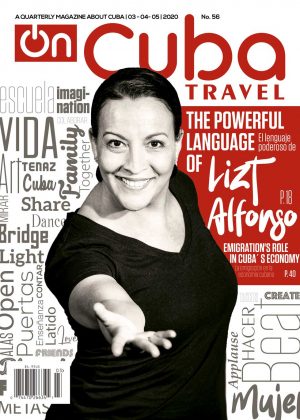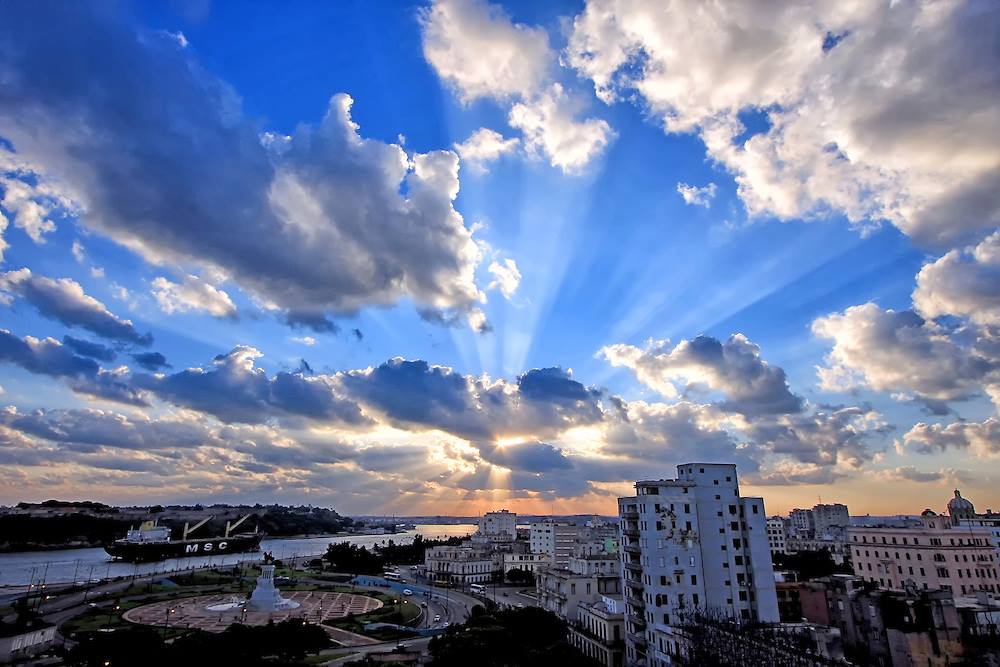So this voice outlives the man
and that man is now albums, portraits, tears,
a hat
with huge flying wings
—and a cane!
(FRAGMENT FROM THE POEM “OYENDO UN DISCO DE BENNY MORÉ,” BY ROBERTO FERNÁNDEZ RETAMAR)

Benny Moré is like a god in Cuba. He is spoken of in the present tense, as if he were a close friend or neighbor, as if he had never left, as if his voice still shakes the Ali Bar, the nightclub that he turned into a personal haven and where his followers used to wait for him night after night, no matter at what time he would burst through the door to unleash the frenzy. No one could resist his incomparable voice, his charisma, his unique way of making them dance. Cubans the world over talk about him, calling him simply “El Benny,” or “El Bárbaro,” or “El Bárbaro del Ritmo.”
There isn’t a Cuban who, in a nostalgic moment, doesn’t put on one of his great boleros. To hear him sing Cómo fue, Alma mía or Mi amor fugaz is enough for any contained feelings to surface. He has been the soundtrack to so many celebrations. To the rhythm of Qué bueno baila usted, Santa Isabel de las Lajas, or Maracaibo oriental, the madness of rhythm is unleashed and, at that moment, the certainty that El Benny is timeless is confirmed: his sones, guarachas and boleros resist the passage of time.
Benny Moré is a popular genius whose innate talent prevailed—he was always compelled to sing, and from the beginning he sang on street corners as a traveling musician, earning pennies to help alleviate the poverty he lived in. He must have been very sure of his own genuine talent and courage, when he arrived in Havana to try his luck with only a few pesos and his guitar on his shoulder. His voice resonated in dodgy bars, cabarets of dubious reputation, cheap restaurants, and canteens, until Miguel Matamoros discovered him singing in a restaurant on Avenida del Puerto and Benny quickly agreed to join the band that the great sonero was forming to tour in Mexico.
That was a turning point in his life and the beginning of a historical musical career—his time in Mexico, his first recordings for the RCA Victor, his work on albums with Pérez Prado and his incursion in films of the so-called rumberas cinema, during the golden age of Mexican cinema, which placed him at the beginning of the international emergence of the mambo. Benny was the voice of the big band where Bebo Valdés premiered his batanga rhythm, a decisive reference to which Benny himself would turn to later when he formed the incomparable Banda Gigante.
Benny is equally excellent singing a son montuno, a guaracha, a bolero, or improvising some country décimas. But what is even more amazing is his ability to direct his great orchestra of seasoned musicians; he makes brilliant arrangements and orchestrations based on sound, without having studied music, nor being able to read music. Benny asked his musical director and friend, the great trombonist Generoso Jiménez, what he wanted from each instrument in a given piece. The result is those extraordinary and modern arrangements, which Jiménez articulated and transferred to the score. During the 1950s, Benny Moré would incite an authentic madness for Cuban popular music. No one who listened to him sing was left with any doubt: Benny Moré was an unprecedented musical phenomenon, Cuba’s greatest musical genius.
Subsequently he brought his music to Venezuela, Colombia, Peru, and Panama, as well as Puerto Rico, Los Angeles, and New York. He performed in 1960 at the Hollywood Palladium in a unique show, accompanied by Tito Puente and his orchestra. Puente, like Machito and his Afrocubans, would accompany him again and again at the famous Palladium in New York. With these performances, Benny began a sort of conquest; initially few people there knew him—his fame on those stages had been limited to the Latin community and to assiduous Americans, where the mambo and the cha-cha were all the rage.
But he would not return to those venues. He would die at forty-three, in the midst of a triumphant career that only a terrible cirrhosis of the liver could put an end to. Alcohol and a fast lifestyle, that he both enjoyed and despised, accelerated his end. Legend has been fierce in emphasizing his informality and his inability to stick to a chronometric discipline, characteristic features of the great Cuban musician. However, a definitive critical judgment would also be contradictory here; just forty-eight hours before his death and in terrible physical condition, he didn’t cancel a contract at a dance in the town of Palmira, more than 200 kilometers from the capital. He gave his all on stage until he finished singing and then coughed up blood, foretelling his imminent end.
Those who lived through it remember that unparalleled and spontaneous manifestation of popular mourning. People accompanied him with deep pain along the funeral route from the capital to his beloved native Santa Isabel de las Lajas, in Cienfuegos.
He had enough time, however, to leave a legacy that places him without a doubt among the greatest Cuban and Latin American musicians. His recordings, mostly with RCA Victor, encapsulate his voice and his personal way of being Cuban.
Bartolomé Maximiliano Moré had no precedent, nor has he had a successor, given his unparalleled genius and talent. With his passing, a cycle in Cuban music was closed that wouldn’t be reopened, because Benny is unique—a natural and rare genius.
Benny Moré’s definitive absence established the perception of his genius, and also the truth and myths surrounding him, never so resounding and accurate, and increasingly fueled by a love that only a dancing- and bolero-singing country is capable of.
If he read this, Benny would probably respond with an incredulous and carefree smile, because, for him, singing and entertaining were the most natural things in the world, whether in Havana, Los Angeles, or New York.






